The Visual Communication and Design degree at University of Home Economics is a multifaceted four year degree programme that develops students into professionals who can generate creative and innovative solutions for local and international advertising needs. Range of VC & D courses are designed whilst keeping the aesthetic and market requirements in consideration. From theory to practical our courses lead towards creative and innovative yet functional pursuits.
The eight semester programme, aligned with emerging pedagogical practices, provides a diverse understanding of design-thinking while utilizing a trans-disciplinary approach to cope up the challenges offered by an ever-evolving marketplace, locally and globally. This programme integrates subject specific courses along with wide spectrum of generalized courses to expose students with constructive approach of information building with an array of socio-economic constructs so that they can contextualize their practice based on originality.
Eligibility Criteria
- Academic Record 70%
- Entry Test 20%
- Interview 10%
(50% passing marks for both test and interviews are mandatory to qualify)
Number of Seats
· Open Merit: 100
· Self-Support: 100
· Seats may be increased (If required with the approval of the Competent Authority)
| Sr.no | Categories | No of Courses Recommended by HEC | No of Cr. Hrs. Recommended by HEC | No of Courses Approved by Department | No of Cr. Hrs. Approved by Dep in | ||
| BoS | A/C | BoS | A/C | ||||
| 1. | Gen Education Courses | 12 | 30 | 12 | 30 | ||
| 2. | Major Courses | 27 | 72 | 28 | 78 | ||
| 3. | Interdisciplinary/Allied Courses | 04 | 12 | 04 | 12 | ||
| 4. | Minor Courses | 04 | 12 | 04 | 12 | ||
| 5. | Field Experience/ Internship | 01 | 03 | 01 | 03 | ||
| 6. | Capstone Project | 01 | 03 | 01 | 03 | ||
| Total | 49 | 132 | 49 | 138 | |||
Scheme of Studies
Fall-2023-Onwards
| Nature of Course | Course Code | Name of Subject | Cr. Hrs. | |
| SEMESTER 1 | ||||
| INTR-I | Interdisciplinary/Allied Courses (Choose from the list) | 3(0+3) | ||
| GEN-I | Functional English | 3(3+0) | ||
| GEN-II | Ideology & Constitution of Pakistan | 2(2+0) | ||
| GEN-III | Arts & Humanities (Choose from the List) | 2(2+0) | ||
| GEN-IV | Natural Sciences (Choose from the List) | 3(2+1) | ||
| MAJ-I | VCD-101 | Drawing | 3(0+3) | |
| MAJ-II | VCD-102 | Foundation Design I | 3(0+3) | |
| Total | 19 | |||
| SEMESTER 2 | ||||
| INTR-II | Interdisciplinary/Allied Courses (Choose from the list) | 3(0+3) | ||
| GEN-V | Applications of Information and Communication Technologies (ICT) | 3(2+1) | ||
| GEN-VI | Expository Writing | 3(3+0) | ||
| GEN-VII | Islamic Studies OR Religious Education/Ethics | 2(2+0) | ||
| GEN-VIII | Civics and Community Engagement | 2(2+0) | ||
| MAJ-III | VCD-103 | Drawing from Imagination | 2(0+2) | |
| MAJ-IV | VCD -104 | Foundation Design II | 3(0+3) | |
| Total | 18 | |||
| SEMESTER 3 | ||||
| INTR-III | FIN-209 | Interdisciplinary/Allied Courses (Choose from the list) | 3(3+0) | |
| GEN-IX | Social Sciences (Choose from the list) | 2(2+0) | ||
| GEN-X | Quantitative Reasoning-I | 3(3+0) | ||
| MAJ-V | VCD-201 | Visual Communication Design I | 3(0+3) | |
| MAJ-VI | VCD-202 | Introduction to Videography | 3(0+3) | |
| MAJ-VII | VCD-203 | Conceptual Photography | 3(0+3) | |
| Total | 17 | |||
| SEMESTER 4 | ||||
| INTR-IV | FIN-211 | Interdisciplinary/Allied Courses (Choose from the list) | 3(3+0) | |
| GEN-XI | Entrepreneurship | 2(2+0) | ||
| GEN-XII | Quantitative Reasoning-II | 3(3+0) | ||
| MAJ-VIII | VCD-204 | Visual Communication Design II | 3(0+3) | |
| MAJ-IX | VCD-205 | TVC Production | 3(0+3) | |
| MAJ-X | VCD-206 | Commercial Photography | 2(0+2) | |
| MAJ-XI | VCD-207 | Book Illustration | 2(0+2) | |
| Total | 18 | |||
| SEMESTER 5 | ||||
| MAJ-XII | VCD-301 | Visual Communication Design III | 3(0+3) | |
| MAJ-XIII | VCD-302 | Game Design I | 3(0+3) | |
| MAJ-XIV | VCD-303 | Packaging Design | 3(0+3) | |
| MAJ-XV | VCD-304 | Techniques of Printing | 2(2+0) | |
| MAJ-XVI | VCD-305 | Typography | 3(0+3) | |
| MIN-I | (Choose from the list) | 3(0+3) | ||
| Total | 17 | |||
| SEMESTER 6 | ||||
| MAJ-XVII | VCD-306 | Visual Communication Design IV | 3(0+3) | |
| MAJ-XVIII | VCD-307 | Game Design II | 3(0+3) | |
| MAJ-XIX | VCD-308 | History of Design I | 2(2+0) | |
| MAJ-XX | VCD-309 | Research Methodology | 2(2+0) | |
| MAJ-XXI | VCD-310 | Basic Marketing | 2(2+0) | |
| MAJ-XXII | VCD-311 | Introduction to Copy Writing | 2(1+1) | |
| MIN-II | FIN-312 | (Choose from the list) | 3(0+3) | |
| Total | 17 | |||
| SEMESTER 7 | ||||
| MAJ-XXIII | VCD-401 | Capstone Project | 3(0+3) | |
| MAJ-XXIV | VCD-402 | Animation | 3(0+3) | |
| MAJ-XXV | VCD-403 | Thesis | 3(0+3) | |
| MAJ-XXVI | VCD-404 | History of Design II | 2(2+0) | |
| MAJ- XXVII | VCD-405 | Internship | 3(0+3) | |
| MIN-III | FIN-410 | (Choose from the list) | 3(0+3) | |
| Total | 17 | |||
| SEMESTER 8 | ||||
| MAJ-XXVIII | VCD-406 | Thesis | 3(0+3) | |
| MAJ-XXIX | VCD-407 | User Interface Design | 3(0+3) | |
| MAJ-XXXX | VCD-408 | Design Seminar | 3(3+0) | |
| MAJ-XXXI | VCD-408 | Research Report | 3(3+0) | |
| MIN-IV | (Choose from the list) | 3(0+3) | ||
| Total | 15 | |||
| Total Credit Hours | 138 | |||
- What do you think is the relevance of visual communication design as a student?
Visual communication design is incredibly relevant for students because it equips them with the skills to convey messages effectively through images, graphics, and other visual elements. In today’s world, where attention spans are short and information overload is common, the ability to communicate visually is essential for grabbing and retaining audience attention. Whether it’s designing websites, creating marketing materials, or crafting social media posts, visual communication design plays a crucial role in engaging and influencing audiences.
- What is the job description of a visual communication degree?
A degree in visual communication typically prepares students for a variety of roles in the creative industry. Job descriptions can vary depending on the specific field and specialization, but common roles include graphic designer, art director, web designer, user experience (UX) designer, multimedia artist, illustrator, and animator.
In these roles, professionals might be responsible for creating visual concepts, designing layouts, producing digital and print materials, developing branding strategies, crafting user interfaces, and communicating messages effectively through visual mediums. Additionally, they may collaborate with clients, marketing teams, and other stakeholders to ensure that visual communication aligns with organizational goals and resonates with target audiences.
- Do I need a portfolio to apply to VCD?
Yes, having a portfolio is typically essential when applying to visual communication design (VCD) programs. Your portfolio showcases your skills, creativity, and ability to communicate visually. It allows admissions committees to assess your potential as a student in the program and your readiness to excel in the field.
Your portfolio should include a variety of your best work, such as sketches, digital designs, illustrations, photography, or any other relevant visual projects. It’s important to curate your portfolio thoughtfully, selecting pieces that demonstrate your technical abilities, creativity, and range of skills.
- What are the fields of design in Mai communication?
Visual communication encompasses various fields of design, including:
Graphic Design: Creating visual content to communicate messages through typography, imagery, and layout.
Motion Graphics: Using animation techniques to convey information or tell stories.
Web Design: Designing websites and user interfaces for digital platforms.
Branding and Identity Design: Developing visual identities, including logos and brand guidelines, to represent organizations or products.
Advertising Design: Crafting visuals for advertising campaigns across various media channels.
Packaging Design: Designing packaging for products to attract consumers and convey information.
Environmental Graphic Design: Creating visual elements within physical spaces to enhance user experiences and convey information.
UI/UX Design: Designing user interfaces and experiences for digital products to optimize usability and functionality.
Illustration: Creating visual representations of concepts, ideas, or stories through drawing, painting, or digital techniques.
Information Design: Presenting complex information in a clear and visually appealing manner, often through infographics or data visualization
- What is the course outline for BSc in VCD?
The course outline for a Bachelor of Science (BSc) in Visual Communication Design (VCD) may vary depending on the specific university or institution offering the program. However, here’s a general overview of the typical subjects and topics covered in such a program:
Foundation Courses: These courses provide a broad introduction to the principles and practices of visual communication design. They may cover topics such as design theory, history of design, color theory, and basic drawing skills.
Typography: This course focuses on the study of typefaces, fonts, and typographic design. Students learn about the principles of typography, letterforms, spacing, and layout.
Graphic Design: This course delves into the principles and techniques of graphic design, including composition, visual hierarchy, image manipulation, and design software tools such as Adobe Photoshop, Illustrator, and InDesign.
Digital Media Design: Students learn about digital media technologies and their application in visual communication design. Topics may include web design, interactive media, animation, and user experience (UX) design.
Advertising and Marketing Communication: This course explores the role of visual communication in advertising and marketing campaigns. Students learn about branding, advertising strategies, market research, and consumer behavior.
Motion Graphics: This course focuses on the principles of motion graphics design, including animation techniques, storytelling, timing, and visual effects. Students may work with software such as Adobe After Effects and Cinema 4D.
Publication Design: Students learn about the design and layout of printed materials such as magazines, newspapers, books, and brochures. Topics may include grid systems, typography, image placement, and print production.
User Interface (UI) and User Experience (UX) Design: This course covers the design of digital interfaces for websites, mobile apps, and other interactive systems. Students learn about usability principles, wireframing, prototyping, and user testing.
Visual Identity and Branding: This course explores the creation and management of visual identities for brands and organizations. Topics may include logo design, brand guidelines, corporate identity systems, and brand strategy.
Portfolio Development: In this course, students learn how to showcase their design work effectively through portfolio creation and presentation techniques. They receive guidance on curating their best projects and preparing for entry into the professional field.
Elective Courses: Students may have the opportunity to choose elective courses based on their interests and career goals. These courses could cover topics such as illustration, photography, packaging design, design entrepreneurship, or advanced digital media techniques.
Internship or Capstone Project: Many programs include an internship or capstone project component, allowing students to gain real-world experience in a professional design environment or to work on a substantial design project under the guidance of faculty mentors.
- What are the fields that a student can further explore with a BSC degree in VCD?
A Bachelor of Science (BSc) degree in Visual Communication Design (VCD) can open up various fields for further exploration. Here are some options:
Graphic Design: Focuses on creating visual content for various purposes such as branding, advertising, web design, and print media.
User Experience (UX) Design: Involves designing digital interfaces and experiences to enhance user satisfaction and usability.
Motion Graphics: Involves creating animated graphics, typically for multimedia projects such as films, television shows, advertisements, and video games.
Advertising: Involves creating visual campaigns to promote products or services across various media platforms.
Web Design and Development: Involves designing and developing websites, including aspects such as layout, navigation, and user interaction.
Illustration: Focuses on creating visual representations of ideas, concepts, or stories, often for use in books, magazines, advertisements, or digital media.
Branding and Identity Design: Involves creating visual identities for companies, organizations, or products, including logos, color schemes, and brand guidelines.
Packaging Design: Involves designing the packaging for products, considering both aesthetic appeal and functional requirements.
Film and Video Production: Involves using visual communication skills to create films, videos, or animations, including aspects such as cinematography, editing, and visual effects.
Exhibition Design: Involves designing immersive environments or displays for events, museums, galleries, or trade shows.
- What are the requirements for applying to VCD?
The specific requirements for applying to a Visual Communication Design (VCD) program may vary depending on the institution and country. However, here are some common requirements:
High School Diploma or Equivalent: Typically, applicants need to have completed high school or its equivalent to be eligible for admission.
Portfolio: Many VCD programs require applicants to submit a portfolio showcasing their artistic and design skills. The portfolio may include examples of artwork, design projects, illustrations, photography, and any other relevant creative work.
Academic Transcripts: Applicants may need to provide transcripts of their high school or previous college coursework to demonstrate their academic qualifications.
Letters of Recommendation: Some programs may require letters of recommendation from teachers, counselors, or other individuals who can speak to the applicant’s skills, creativity, and potential for success in a design program.
Statement of Purpose: Applicants may be asked to submit a statement of purpose or personal statement explaining their interest in visual communication design, their career goals, and why they are applying to the program.
Standardized Test Scores: While not always required, some institutions may ask for standardized test scores such as the SAT or ACT.
English Proficiency Test Scores: For international students applying to programs in English-speaking countries, proof of English proficiency may be required. This is typically demonstrated through scores on tests like the TOEFL or IELTS.
Interview: Some programs may require an interview as part of the application process. This interview may be conducted in person or virtually and provides an opportunity for the admissions committee to assess the applicant’s skills, interests, and fit for the program.
- What is the main purpose of a Visual Communication Design degree
A Visual Communication Design degree typically aims to equip students with the skills and knowledge necessary to effectively convey messages, ideas, and information visually. The main purpose of this degree is to train individuals in various aspects of visual communication, including graphic design, typography, illustration, branding, advertising, and digital media.
Graduates of Visual Communication Design programs often pursue careers as graphic designers, art directors, illustrators, web designers, user experience (UX) designers, or creative directors in industries such as advertising, marketing, publishing, and digital media. They use their expertise in design principles, color theory, typography, and software tools to create visually engaging and effective communication materials across various mediums, including print, digital, and multimedia platforms. Additionally, they may work independently as freelance designers or establish their design studios.
- What is the merit of applying to VCD?
The merits of applying for a Visual Communication Design (VCD) program include:
- Cultivating creativity and critical thinking.
- Versatility in working across different mediums.
- Access to diverse career opportunities.
- Development of effective communication skills.
- Technical proficiency in design software.
- Emphasis on collaboration and teamwork.
- Creating designs with meaningful impact.
- What is the role of visual communication in today’s digital age?
Visual communication plays a pivotal role in today’s digital age. In a world inundated with information, visuals serve as powerful tools for grabbing attention, conveying messages quickly and effectively, and making content more engaging and memorable. From social media posts to advertisements, websites to presentations, visuals play a crucial role in enhancing communication and fostering better understanding. With the rise of platforms like Instagram, TikTok, and Snapchat, where visuals are the primary mode of communication, the importance of visual content has only grown. In essence, visual communication acts as a universal language that transcends barriers of culture and language, making it indispensable in the digital landscape.
- What is visual design and its importance?
Visual design is the art of using elements like colors, typography, and imagery to communicate messages effectively. Its importance lies in enhancing communication, shaping brand identity, improving user experience, evoking emotions, and standing out in a crowded digital landscape.
- Is graphic design also known as visual communication?
Yes, graphic design is often synonymous with visual communication. Both terms refer to the use of visuals such as images, typography, and layout to convey messages, ideas, and information effectively. Graphic design is a subset of visual communication, focusing specifically on the creation of visual content for various purposes such as advertising, branding, publications, and digital media.





